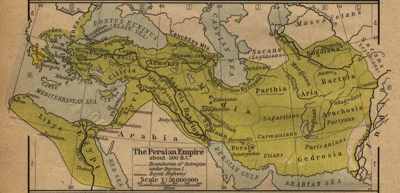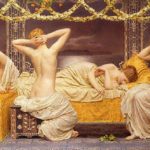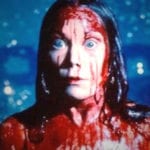 Music
Music  Music
Music  History
History 10 Less Than Jolly Events That Occurred on December 25
 Weird Stuff
Weird Stuff 10 Funny Ways That Researchers Overthink Christmas
 Politics
Politics 10 Political Scandals That Sent Crowds Into the Streets
 Weird Stuff
Weird Stuff Ten Bizarre Facts About The Doge Meme
 Our World
Our World 10 Ways Your Christmas Tree Is More Lit Than You Think
 Movies and TV
Movies and TV The 10 Coolest Stars to Set Sail on The Love Boat
 History
History 10 Things You Didn’t Know About the American National Anthem
 Technology
Technology Top 10 Everyday Tech Buzzwords That Hide a Darker Past
 Humans
Humans 10 Everyday Human Behaviors That Are Actually Survival Instincts
 Music
Music 10 Surprising Origin Stories of Your Favorite Holiday Songs
 History
History 10 Less Than Jolly Events That Occurred on December 25
 Weird Stuff
Weird Stuff 10 Funny Ways That Researchers Overthink Christmas
Who's Behind Listverse?

Jamie Frater
Head Editor
Jamie founded Listverse due to an insatiable desire to share fascinating, obscure, and bizarre facts. He has been a guest speaker on numerous national radio and television stations and is a five time published author.
More About Us Politics
Politics 10 Political Scandals That Sent Crowds Into the Streets
 Weird Stuff
Weird Stuff Ten Bizarre Facts About The Doge Meme
 Our World
Our World 10 Ways Your Christmas Tree Is More Lit Than You Think
 Movies and TV
Movies and TV The 10 Coolest Stars to Set Sail on The Love Boat
 History
History 10 Things You Didn’t Know About the American National Anthem
 Technology
Technology Top 10 Everyday Tech Buzzwords That Hide a Darker Past
 Humans
Humans 10 Everyday Human Behaviors That Are Actually Survival Instincts
Top 10 Greatest Empires In History
The definition of an empire is: when a single entity has supreme rule and power over a vast area of territory, which consists of peoples of different ethnicity and nationality. This list is based on the influence, longevity, and power of the various empires, and, as you will see, it contains at least one or two entries that may strike some as controversial. My one requirement for this list is that the empire must have been ruled—for at least a majority of the time—by an emperor or king. This excludes modern so-called empires such as the United States and the Soviet Union. The entries here are listed roughly by influence and size.
10 Ottoman Empire

At the height of its power (16th–17th century), the Ottoman Empire spanned three continents, controlling much of Southeastern Europe, Western Asia, and North Africa. It contained 29 provinces and numerous vassal states, some of which were later absorbed into the empire, while others were granted various types of autonomy during the course of centuries. The empire was at the center of interactions between the Eastern and Western worlds for six centuries. With Constantinople as its capital city and vast control of lands around the eastern Mediterranean during the reign of Suleiman the Magnificent (ruled 1520 to 1566), the Ottoman Empire was, in many respects, an Islamic successor to the Eastern Roman (Byzantine) Empire.
Become part of the empire of the future! Buy Orson Scott Card’s Empire at Amazon.com!
9 Spanish Empire

The Spanish Empire proved to be an expert in colonization in the 16th century, more so than virtually any other empire at the time. Their colonies gave them 7.5 million square miles of territory, about 13% of the Earth’s landmass. The Spanish Empire lasted for nearly four centuries, but its heyday only lasted about 40 years.
Spain commissioned voyages to explore the new worlds across the ocean. The most important two were Columbus’s accidental discovery of the Americas in 1492 and Vasco de Gama’s discovery of India. Then, they began using their resources to become powerful, conquering areas in Central and South America. The Spanish defeated the Incas in Peru, the Aztecs in Central America, and the Mayans in the Yucatan. The Spanish only settled a few areas in North America: mainly in Florida and some areas on the West Coast that are now Oregon, Alaska, and Washington. They also settled in what is now British Columbia (in modern-day Canada). Spain had colonies on the other half of the world, too, including Africa and other parts of Europe.
Ultimately, however, Spain faced the threat of military conquest from other European powers and severe monetary problems (especially after being involved in two North American wars), forcing them to allow most of their colonies to withdraw.
8 Persian Empire
or Achaemenid Empire

Babylonians, Akkadians, Assyrians, Sumerians, Hittites, Bactrians, Scythians, Parthians, Medes, Elamites, Egyptians, Ethiopians… Before the Romans, there were the Persians. They basically unified the whole of Central Asia, consisting of many different cultures, kingdoms, empires, and tribes. It was the largest empire in ancient history. At the height of its power, the empire encompassed approximately 8 million km2. The empire was forged by Cyrus the Great and spanned three continents: Asia, Africa, and Europe.
7 Byzantine Empire

The Byzantine Empire, or Eastern Roman Empire, was the Roman Empire during the Middle Ages, centered on the capital of Constantinople and ruled by emperors in direct succession to the ancient Roman emperors. It was called the Roman Empire and also Romania. During its existence, over a thousand years, the Empire remained one of the most powerful economic, cultural, and military forces in Europe, despite setbacks and territorial losses, especially during the Roman–Persian and Byzantine–Arab wars. The Empire received a mortal blow in 1204 by the Fourth Crusade, when it was dissolved and divided into competing Byzantine Greek and Latin realms. Despite the eventual recovery of Constantinople and re-establishment of the Empire in 1261, under the Palaiologan emperors, successive civil wars in the fourteenth century further sapped the Empire’s strength.
6 Han Dynasty

During the Chinese period of warring states, the whole of China was embroiled in a civil war as the different kingdoms within it battled it out with each other in the quest for supremacy. In the end, the Qin State won and gobbled up the whole of China, with 40 million people under its control. The Qin Dynasty didn’t last long, and soon it went to the Han, which eventually controlled China for close to 400 years. The Han Dynasty period is considered a golden age in Chinese history in terms of scientific achievement, technological advances, economics, culture, and political stability. Even to this day, most Chinese people refer to themselves as the Han people. Today, the “Han people” are considered the largest single ethnic group in the world.
5 British Empire

At its greatest extent, the British Empire was known as the largest empire in history, as it covered more than 13,000,000 square miles, which is approximately a quarter of the Earth’s total land area. It controlled more than 500 million people—again, a quarter of the world’s population. It was once said that the “sun never set on the British Empire.” As a result, the legacy it imprinted on these conquered lands is tremendous in terms of political reform, cultural exchanges, and way of life. The English language, which it spread, is the second most widely spoken language in the world today, and many linguistics agree that English is the defacto standard language of the world. The British empire is definitely one of the most influential empires ever to have existed in human history.
4 Holy Roman Empire

During the Middle Ages, they were considered the “superpower” of their time. At its height, the Holy Roman Empire consisted of eastern France, Germany, northern Italy, and parts of western Poland. Despite being relatively small in terms of empires, its influence on the history of central Europe is still felt today. Incredibly, the Empire lasted from the Early Middle Ages to the 19th century. The Empire was formally dissolved on 6 August 1806, when the last Holy Roman Emperor, Francis II (later Francis I of Austria), abdicated following a military defeat by the French under Napoleon. Upon its collapse, the following nations emerged: Switzerland, Holland, the Austrian Empire, Belgium, the Prussian Empire, the Principality of Liechtenstein, the Confederation of the Rhine, and the first French Empire.
3 The Russian Empire

The Russian Empire was a state that existed from 1721 until the Russian Revolution of 1917. It was the successor to the Tsardom of Russia and the predecessor of the Soviet Union. It was the second largest contiguous empire in world history, surpassed only by the Mongol Empire, and the third-largest empire behind the British Empire and the Mongol Empire. In 1866, it stretched from eastern Europe, across Asia, and into North America.
2 Mongol Empire

It all started when Temujin (who was later known as Genghis Khan) vowed in his youth to bring the world to his feet. He almost did. His first act was unifying the scattered Mongolian tribes. Then he set his sight on China, and the rest is history. From Vietnam to Hungary, the Mongol Empire was the largest contiguous empire in the history of mankind. Unfortunately for them, their empire was too big to be controlled, and there was no unity among the different cultures. The Mongols were fearless and ruthless fighters but had little experience in administration. The image of the Mongols as a brutal and savage people is renowned throughout history.
Discover how the Mongol empire influenced the world we know today. Buy Genghis Khan and the Making of the Modern World at Amazon.com!
1 Roman Empire

At first, they were ruled by divine kings, and then they became a republic (perhaps their greatest period) before finally becoming an empire. How a group of farmers, who started off fending off wolves to protect their livestock, eventually became the greatest empire in history is the stuff of legends. Coupled with an excellent military and administrative system, the Roman Empire, or rather ancient Rome, is also one of the longest-lasting. Counting from its founding to the fall of the Byzantine empire, ancient Rome lasted for a whopping 2,214 years!
Ancient Rome contributed greatly to the development of law, war, art, literature, architecture, technology, religion, and language in the Western world. In fact, many historians consider the Roman Empire to be a perfect empire—influential, fair, long-lasting, big, well-defended, and economically advanced. The influence of the Roman Empire is felt to this day, if for no other reason than the influence on the Catholic Church, which took much of its administrative nous and pageantry from it.








